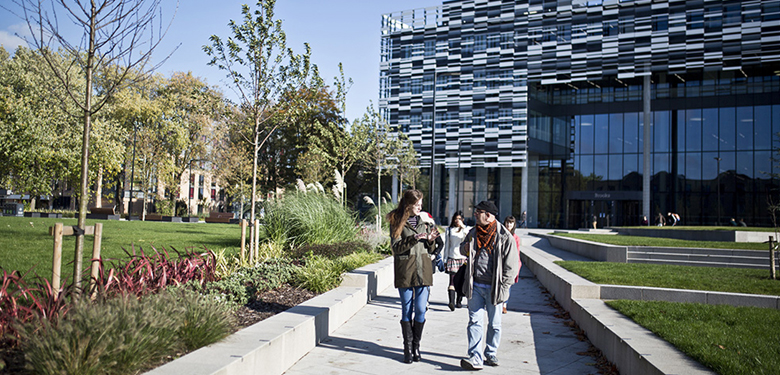The Rise of Sustainability in Schools
When we think about organisations working to reduce water or energy use, setting carbon reduction targets or engaging with the community through outreach programmes, our first thought might not be of a school campus. However, universities today are taking sustainability to the next level, in a way that has been long dominated by the corporate sector.
Their role in society is undeniably vital: shaping young minds and developing a future generation of professionals equipped with the tools to push into the future. Their campuses also hold similar functions to mini-cities: requiring their own transportation services, food outlets and accommodation and housing complex building systems. In both cases, schools hold a powerful role in the future of sustainability – and are stepping up to the plate when it comes to playing their part.
Making Sustainability Part of Curriculum
The availability of sustainability related courses has increased in recent years to match the rise of job opportunities.1 Today, some of the greenest universities have numerous sustainability-related opportunities. For example, Colorado State University has reported that sustainability-related research is conducted in 90% of academic departments,2 and over 30% of courses offered are sustainability-related. For them, sustainability is central to their school – from academics, research and operations. This could be compared to companies, like Unilever, who continuously top the list when it comes to sustainability integration by considering it throughout the company and their products.3
Governing Sustainability
Having policies, programmes, resources or a responsible person that administers sustainability is key to ensuring that important areas are properly managed. In the university setting, such governance is typically overseen by an office of sustainability. When looking at all eight of Hong Kong’s University Grants Commission (UGC) Funded Universities4, seven have a sustainability office with dedicated website, six of whom have sustainability-related policies published on these sites. On the global scale, ninety-eight percent of universities on the Princeton Review’s Green Colleague Guide have both a sustainability officer and committee.5 Without this responsible party, advancing a greener agenda including policies and programmes.
Setting Targets
Companies that push a sustainability agenda challenge themselves by making public announcements of goals to improve their operations. Likewise, a number of schools are choosing to do the same. In May 2010, the Vice Chancellors and Presidents of the same eight UGC funded universities in Hong Kong signed the Hong Kong Declaration. In doing so, signatories are committed to establishing targets to reduce energy, greenhouse gas (GHG) emissions, water use and waste. What is unique is that together, a joint GHG emissions reduction target of 20% by 2020/2021 has been set (compared to a 2015/2016 baseline).6
On the global scale, setting aggressive energy and carbon targets is becoming more popular amongst early adopters of sustainability – corporates and schools alike. The race amongst university institutions to become carbon neutral is gaining momentum. In the United States, American University in Washington D.C. was the first campus to go carbon neutral in 2018 with a student population of over 13,000,7 where as in the United Kingdom, St. Andrews University in Scotland is aiming to be the first to achieve zero carbon emissions.8 Others worldwide are following suit, aiming for carbon and greenhouse gas neutrality, including Cornell University (by 2050) and University of Florida (by 2025) in the U.S.
Lacking Transparency
Each year in the UK, People & Planet, a student network who campaign for social and environmental justice produce the People & Planet University League, ranking all of UK’s universities by their environmental and ethical performance (the 2018 results were just published). In the past, this ranking was based on a self-assessment survey. However, in 2015 there was a massive boycott from schools, where 61 of the 151 universities decided not to take part. Looking at the trends, it was found that three quarters of those who did not take part were in the bottom third of the 2014 scores.9 Managers at People & Planet were disappointed in the lack of transparency. To combat this, People & Planet have changed their methodology, where instead of ranking based on self-assessments, scores are awarded based on publicly disclosed information from the school’s websites and Estates Management Statistics, published by the Higher Education Statistics Agency (the designated body in England for higher education data and analysis).
In 2018, of 11,000 teens and parents surveyed by The Princeton Review10, 63% said having information about a college’s commitment to the environment would influence their decision to apply or to attend the school.11 Generation Z (those born between 1995 and 2002) are entering the age of higher education and will enter the workforce. If their preferences for sustainability is similar to that of millennials, will your university or company receive their application?
3. https://globescan.com/wp-content/uploads/2018/06/GlobeScan-SustainAbility-Leaders-Survey-2018-Report.pdf
4. Of which include: The Chinese University of Hong Kong, City University of Hong Kong, The Education University of Hong Kong, Hong Kong Baptist University, The Hong Kong Polytechnic University, The Hong Kong University of Science and Technology, The University of Hong Kong and The Lingnan University
9. https://www.theguardian.com/education/2015/jan/20/how-green-university-people-planet-green-league
